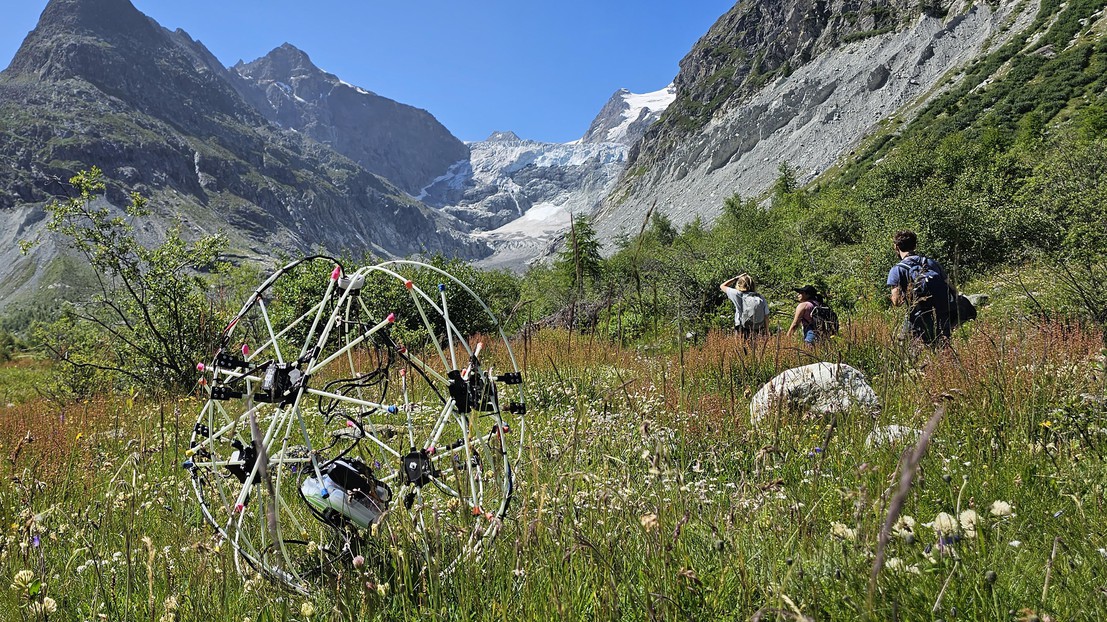2025-02-27 スイス連邦工科大学ローザンヌ校 (EPFL)

The morphing Good Over All Terrains (GOAT) robot in sphere mode © CREATE EPFL
<関連情報>
- https://actu.epfl.ch/news/morphing-robot-turns-challenging-terrain-to-its–2/
- https://www.science.org/doi/10.1126/scirobotics.adp6419
極端な屋外環境における能動的・受動的形態適応によるロボット運動 Robotic locomotion through active and passive morphological adaptation in extreme outdoor environments
Max Polzin, Qinghua Guan, and Josie Hughes
Science Robotics Published:26 Feb 2025
Abstract
Robotic locomotion has shown substantial advancements, yet robots still lack the versatility and agility shown by animals navigating complex terrains. This limits their applicability in complex environments where they could be highly beneficial. Unlike existing robots that rely on intricate perception systems to construct models of both themselves and their surroundings, a more bioinspired approach leverages reconfiguration to adapt a robot’s morphology to its environment. Although interest in such multimodal, terrain-adaptive robots is increasing, their capacity for morphological reconfiguration often remains confined to specific body parts or comes at the expense of increased system complexity and reduced locomotion efficiency. Our study seeks to enhance robotic locomotion by developing robots that can actively reconfigure their morphology, altering their physical properties and leveraging their adaptability to navigate efficiently in diverse environments. We demonstrate how combining a compliant structure with morphological reconfiguration allowed a robot to transition between flat and spherical forms, enabling autonomous, multimodal locomotion—driving, rolling, and swimming—across complex terrains with minimal sensing. By actively reconfiguring its morphology to adapt physical properties for compliant interactions, the robot enhanced locomotion across rough, diverse environments. Leveraging its adaptability in different locomotion modes to navigate a 4.5-kilometer path across mountainous, aquatic, and urban terrains, the robot outperformed traditional and multimodal robots in terms of versatility, energy efficiency, and robustness. Developing versatile, energy-efficient, compliant robots capable of reconfiguring their morphology could substantially enhance autonomous navigation, opening up broader applications in unstructured environments, from environmental monitoring to disaster response and extraterrestrial exploration.



